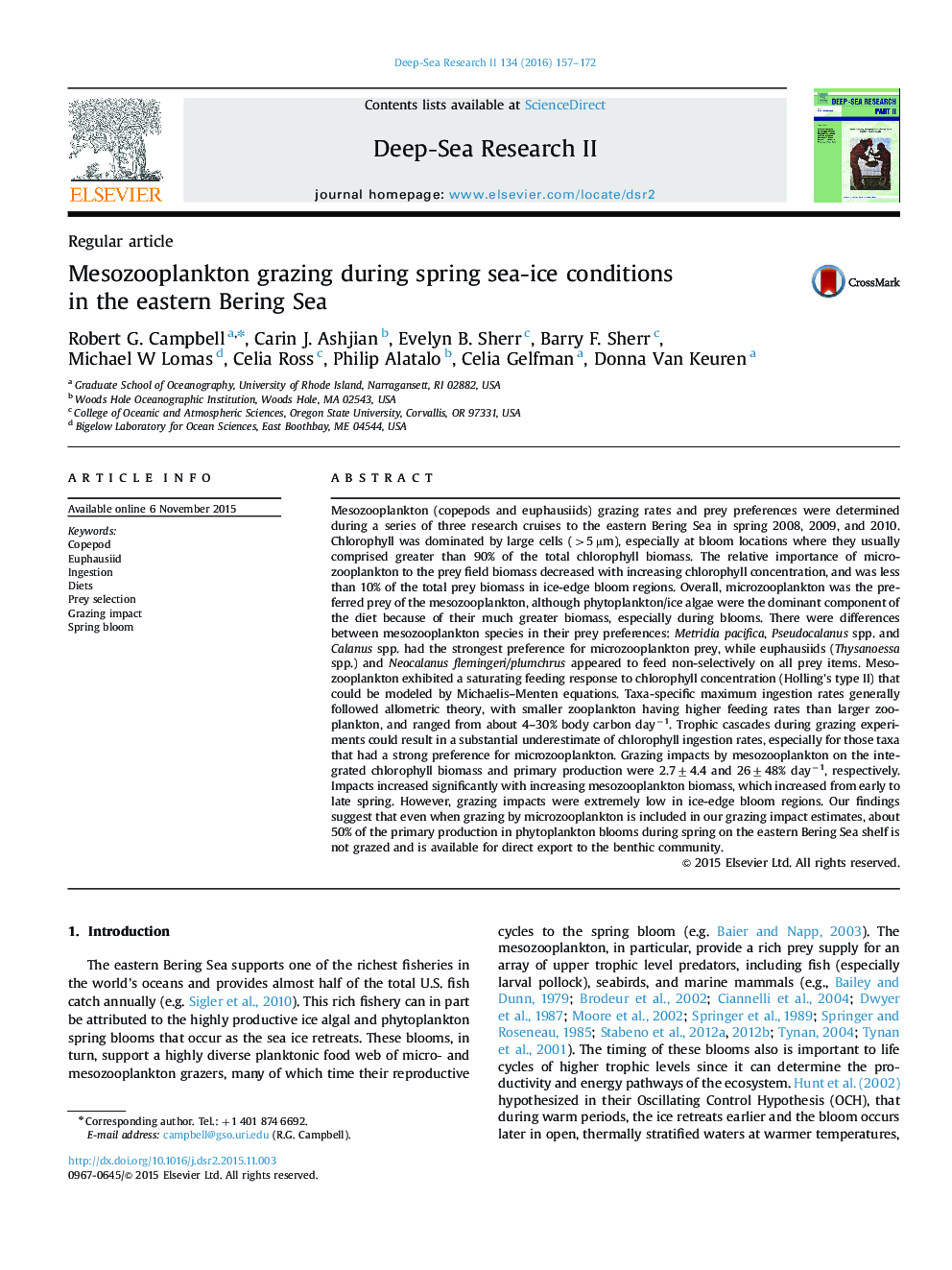| کد مقاله | کد نشریه | سال انتشار | مقاله انگلیسی | نسخه تمام متن |
|---|---|---|---|---|
| 5764987 | 1626408 | 2016 | 16 صفحه PDF | دانلود رایگان |
Mesozooplankton (copepods and euphausiids) grazing rates and prey preferences were determined during a series of three research cruises to the eastern Bering Sea in spring 2008, 2009, and 2010. Chlorophyll was dominated by large cells (>5 µm), especially at bloom locations where they usually comprised greater than 90% of the total chlorophyll biomass. The relative importance of microzooplankton to the prey field biomass decreased with increasing chlorophyll concentration, and was less than 10% of the total prey biomass in ice-edge bloom regions. Overall, microzooplankton was the preferred prey of the mesozooplankton, although phytoplankton/ice algae were the dominant component of the diet because of their much greater biomass, especially during blooms. There were differences between mesozooplankton species in their prey preferences: Metridia pacifica, Pseudocalanus spp. and Calanus spp. had the strongest preference for microzooplankton prey, while euphausiids (Thysanoessa spp.) and Neocalanus flemingeri/plumchrus appeared to feed non-selectively on all prey items. Mesozooplankton exhibited a saturating feeding response to chlorophyll concentration (Holling׳s type II) that could be modeled by Michaelis-Menten equations. Taxa-specific maximum ingestion rates generally followed allometric theory, with smaller zooplankton having higher feeding rates than larger zooplankton, and ranged from about 4-30% body carbon dayâ1. Trophic cascades during grazing experiments could result in a substantial underestimate of chlorophyll ingestion rates, especially for those taxa that had a strong preference for microzooplankton. Grazing impacts by mesozooplankton on the integrated chlorophyll biomass and primary production were 2.7±4.4 and 26±48% dayâ1, respectively. Impacts increased significantly with increasing mesozooplankton biomass, which increased from early to late spring. However, grazing impacts were extremely low in ice-edge bloom regions. Our findings suggest that even when grazing by microzooplankton is included in our grazing impact estimates, about 50% of the primary production in phytoplankton blooms during spring on the eastern Bering Sea shelf is not grazed and is available for direct export to the benthic community.
Journal: Deep Sea Research Part II: Topical Studies in Oceanography - Volume 134, December 2016, Pages 157-172
